YCharts research reveals how thematic ETFs could have impacted balanced portfolios’ performance during recent calamities

Like many issues under the umbrella of ESG, climate change is a long-term concern that advisors and their clients might want to protect against, possibly through passive investment strategies with an anti-carbon tilt. But when a climate-related disaster happens, does it impact portfolios – and can green investment strategies soften the blow?
“When one of these climate disasters happens, it certainly draws public attention to this growing long-term issue,” says Connor Kitko, Director of Product Marketing at YCharts. “And so we wanted to test whether you could hedge against those very significant, highly visible, highly devastating events that really appear in the headlines and capture everyone's attention.”
Among several different analyses chronicled in its white paper Can You Hedge It with an ETF?, YCharts examined how three of the most devastating climate disasters in recent memory – the 2020 wildfires that hit the Western U.S., winter storm Murray, and Hurricane Ida – impacted American stock markets.
Based on a simulation of the S&P 500’s performance during those three periods, YCharts found they had no significant impact. “There may have been some sector-specific impacts on real estate or utilities, but we can’t say these events had a large impact on the overall stock market,” Kitko says. “The S&P 500 wasn’t knocked off its course at the time.”
YCharts also looked at how those events would have impacted a 60-40 balanced portfolio of stocks and bonds, and whether adding certain ESG-related ETFs would have helped the portfolio. It looked at four different ETFs: the iShares MSCI USA ESG Select ETF (SUSA), iShares Global Clean Energy ETF (ICLN), VanEck Low Carbon Energy ETF (SMOG), and the KraneShares Global Carbon Strategy ETF (KRBN).
“KRBN is probably the most interesting one,” Kitko says. “The thesis behind the strategy is that as regulation around climate risks continues to increase, there will be a rising demand for companies to buy carbon credits in order to offset their carbon emissions. So KRBN aims to profit off of the rising cost of carbon credits.”
In two out of the three time periods, YCharts found that adding an allocation to the climate-related ETFs, particularly ICLN and KRBN, would have added to the performance of a balanced portfolio.
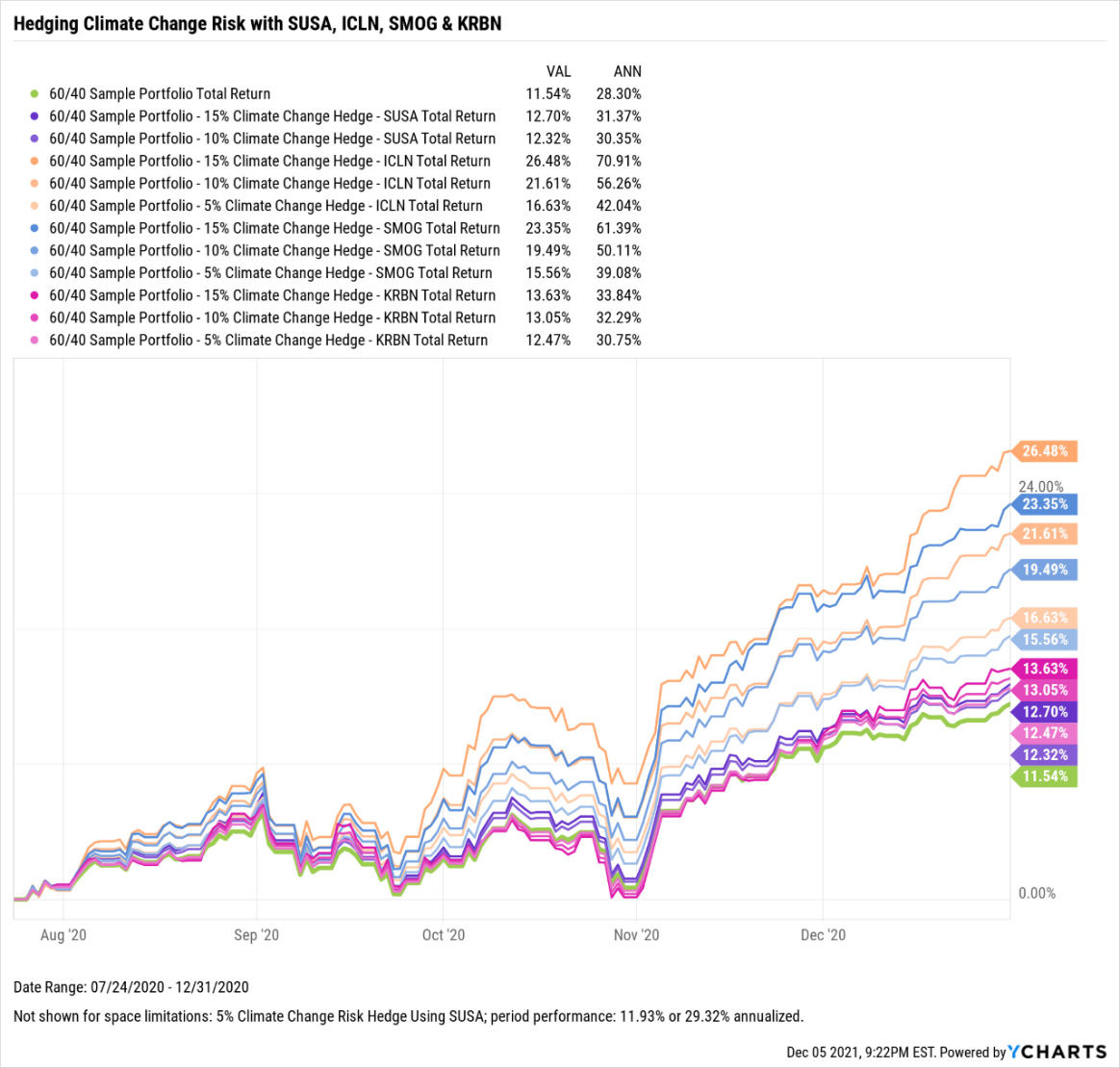 Backtests of portfolio performance during the 2020 wildfires. (Source: YCharts)
Backtests of portfolio performance during the 2020 wildfires. (Source: YCharts)
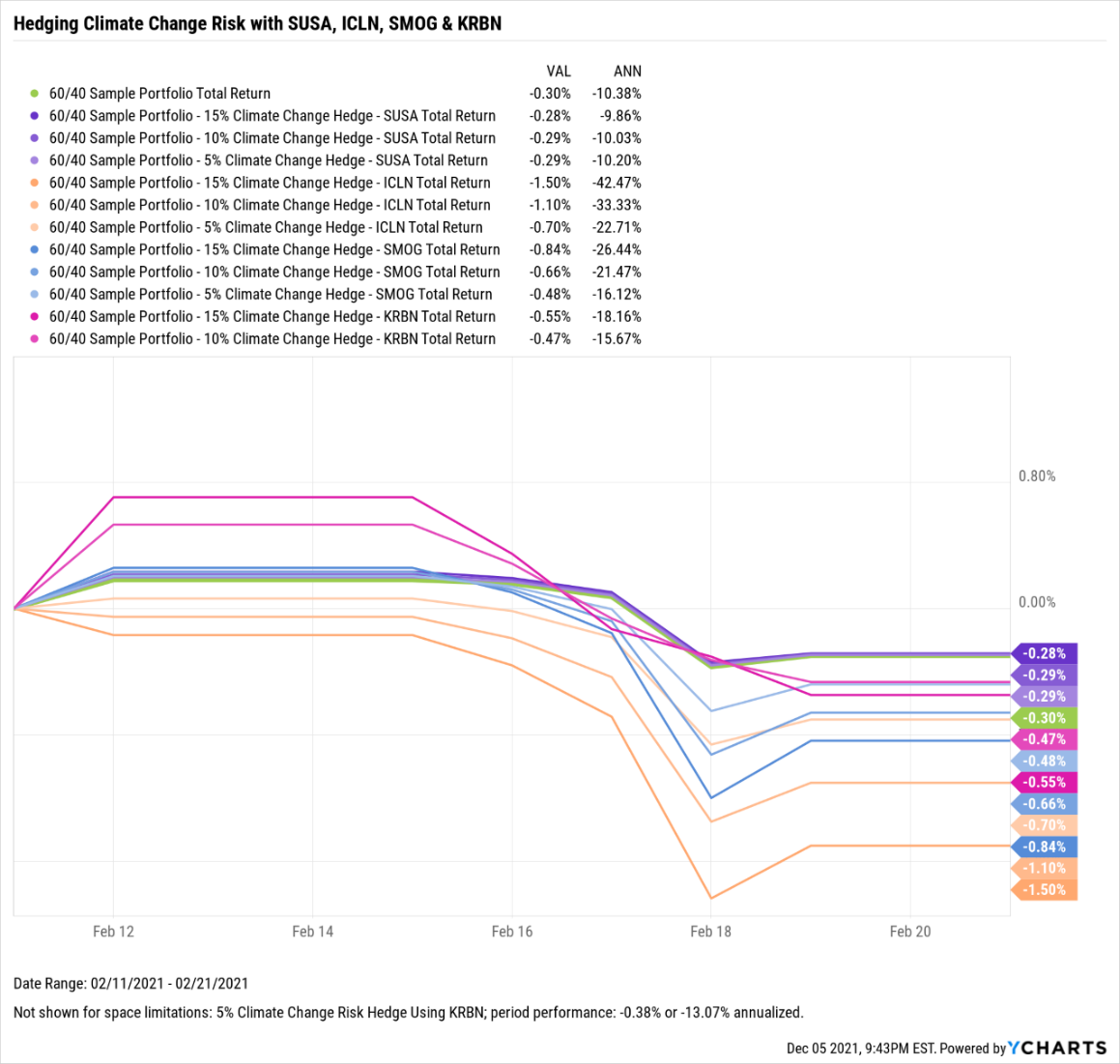 Backtests of portfolio performance during Winter Storm Murray. (Source: YCharts)
Backtests of portfolio performance during Winter Storm Murray. (Source: YCharts)
 Backtests of portfolio performance during Hurricane Ida. (Source: YCharts)
Backtests of portfolio performance during Hurricane Ida. (Source: YCharts)
“The performance of those ETFs during those periods suggests to me that when one of these climate disasters happens, it creates a little bit of FOMO,” Kitko says. “People start to think about how terrible climate change is and what they can do to invest, which bumps up the demand for ESG or responsible investments. So we can see some short-term, rapid performance on the back of enthusiasm more than anything.”
That might be exciting for investors who want a quick performance bump. But looking at the different model portfolios’ behaviour through the lens of volatility and risk, YCharts found that climate ETFs weren’t able to consistently protect or add ballast to a balanced portfolio.
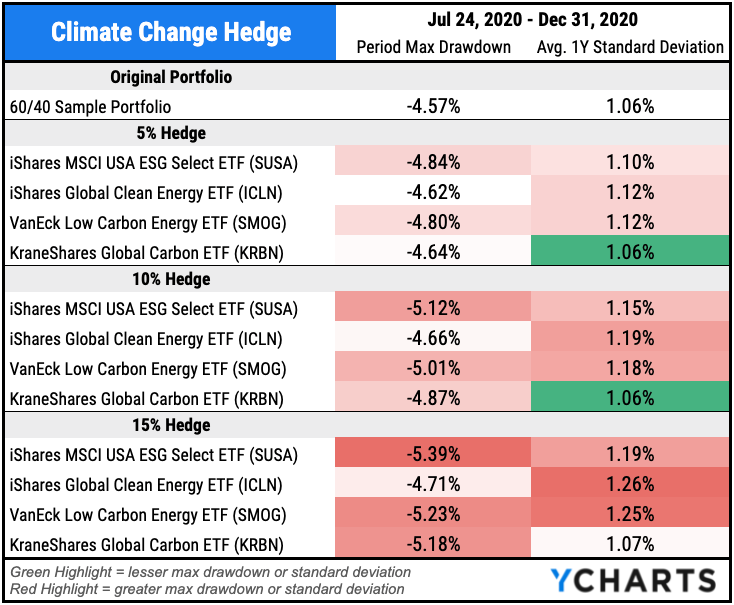 Backtesting risk metrics for model portfolios during the 2020 wildfires. (Source: YCharts)
Backtesting risk metrics for model portfolios during the 2020 wildfires. (Source: YCharts)
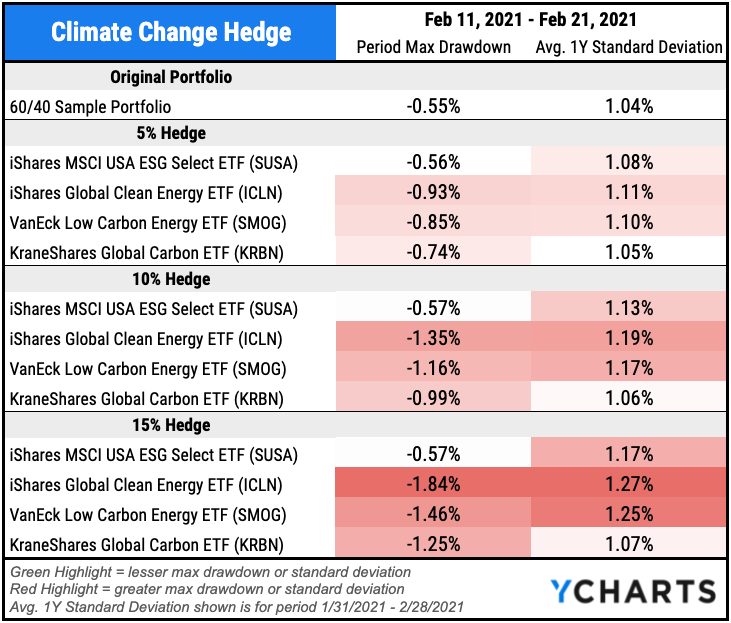 Backtesting risk metrics for model portfolios during Winter Storm Murray. (Source: YCharts)
Backtesting risk metrics for model portfolios during Winter Storm Murray. (Source: YCharts)
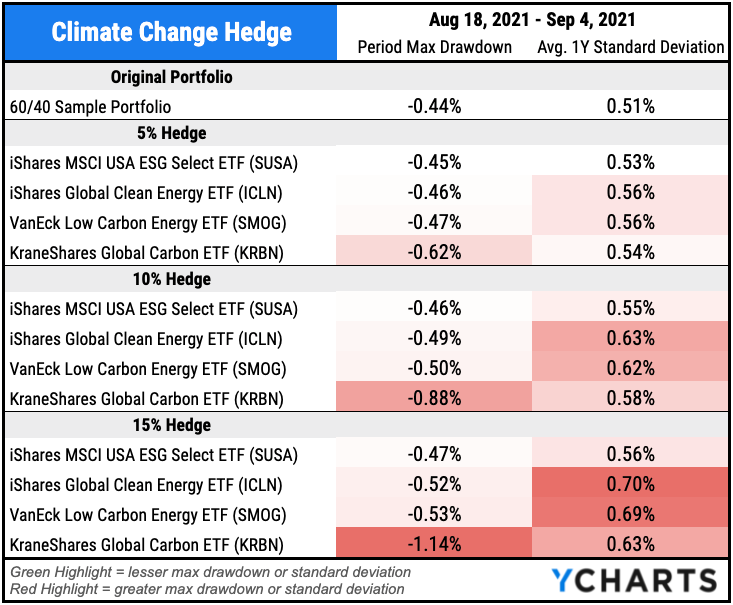 Backtesting risk metrics for model portfolios during Hurricane Ida. (Source: YCharts)
Backtesting risk metrics for model portfolios during Hurricane Ida. (Source: YCharts)
“If we're talking about hedging, just in the context of risk metrics, portfolio drawdown and standard deviation, these ETFs weren’t providing risk management,” Kitko says. “So investors who strictly sought stability or downside protection at the time probably would have been disappointed.”



